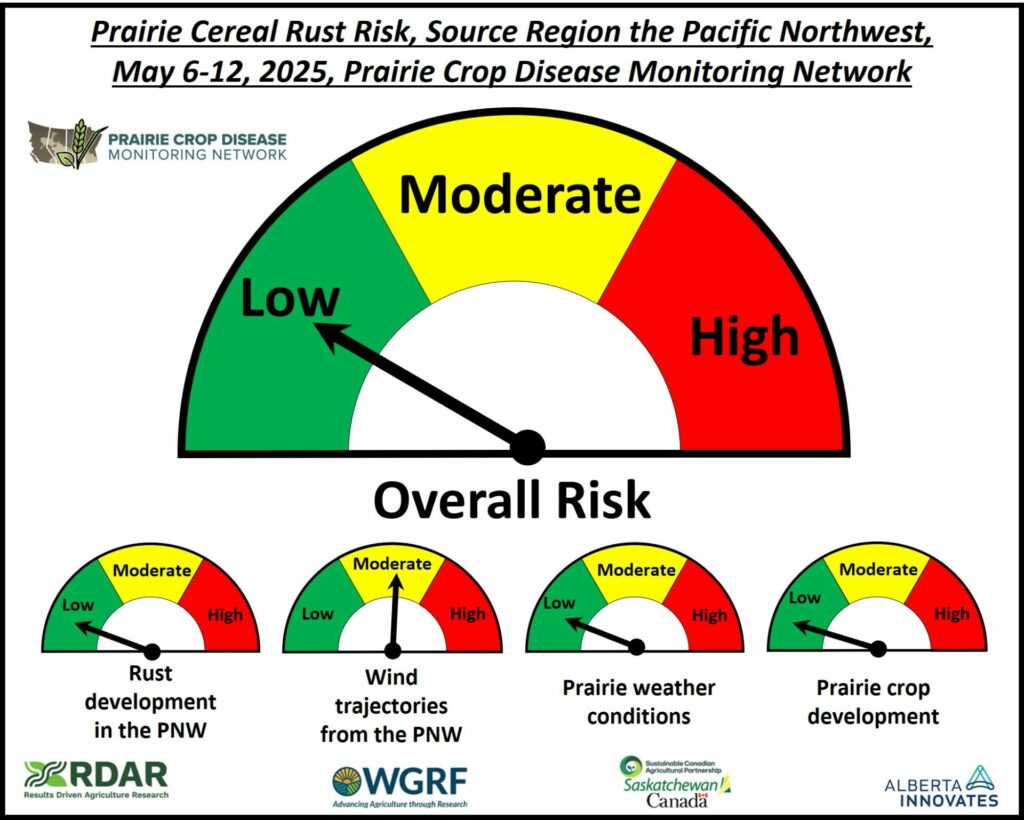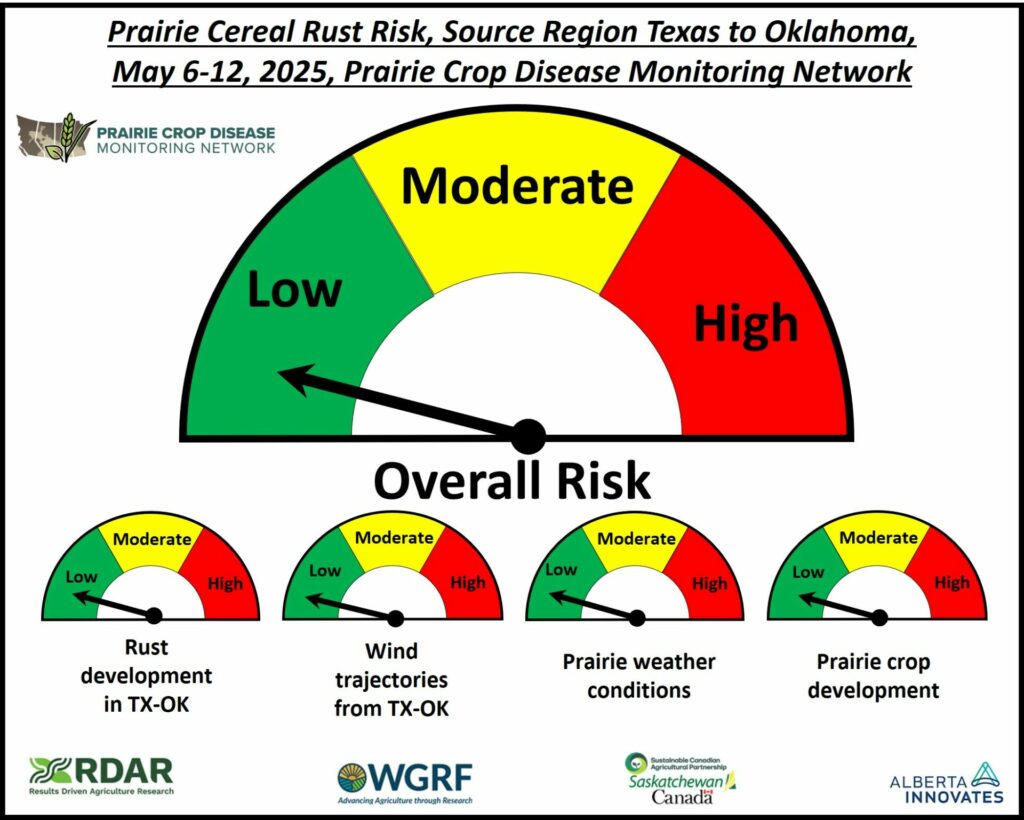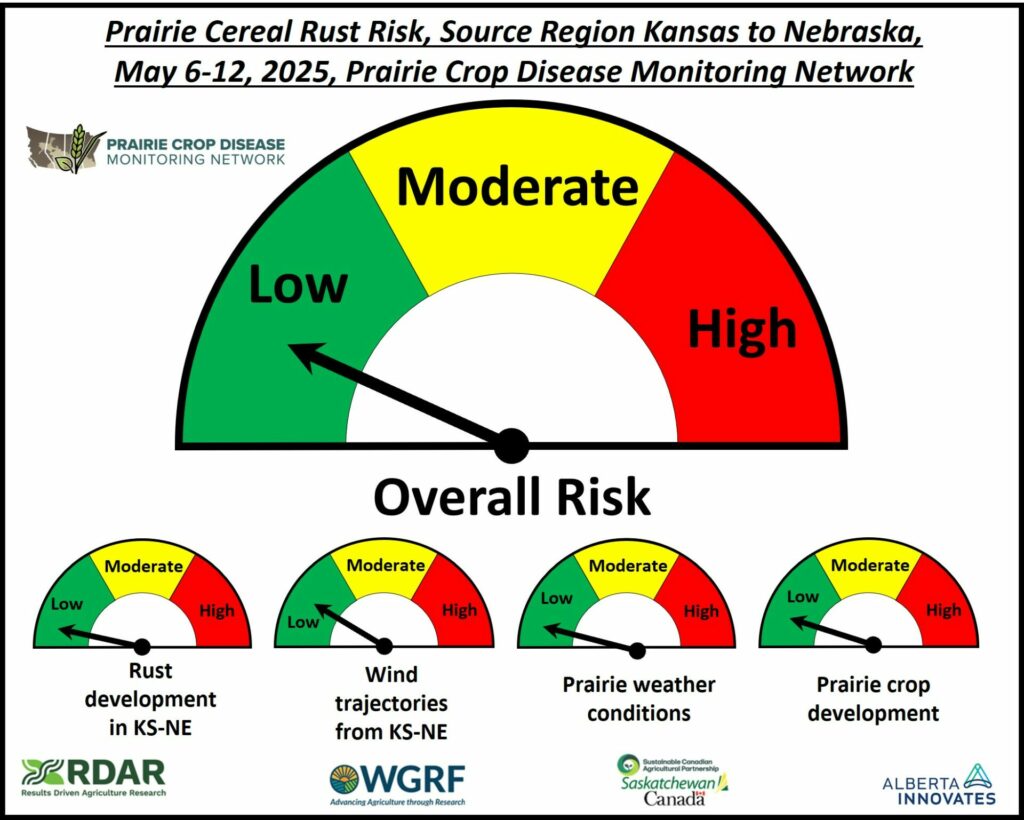The first weekly Prairie Crop Disease Monitoring Network (PCDMN) Prairie wind trajectory cereal rust risk report for 2025 is available for download now at the following link: May 6-12, 2025 report
Pacific Northwest
- There were moderate numbers of reverse wind trajectories that passed over the PNW region and into the prairies
- Stripe rust development started later and is generally limited versus 2024, although further development may occur over the next several weeks
- Prairie winter wheat crops have resumed growth, while much of the spring wheat crop has just been seeded or will be seeded over the next two weeks
- Conditions in many Prairie regions have been fairly dry
- Overall as of May 12, 2025 the risk of stripe rust appearance from the PNW is limited and scouting for this disease in the Prairie region is generally not urgent

Texas-Oklahoma corridor
- There were relatively low numbers of reverse wind trajectories that passed over the TX/OK region and into the prairies
- Development of stripe and leaf rust of wheat and crown rust of oat are continuing, although levels are generally low
- Prairie winter wheat crops have resumed growth, while much of the spring wheat crop has just been seeded or will be seeded over the next two weeks
- Conditions in many Prairie regions have been fairly dry
- Overall as of May 12, 2025 the risk of stem, leaf, stripe, and crown rust appearance from the Texas-Oklahoma corridor is limited and scouting for these diseases in the Prairie region is not urgent

Kansas-Nebraska corridor
- There were relatively low numbers of reverse wind trajectories that passed over the KS/NE region and into the prairies
- There have been limited reports of cereal rusts so far
- Prairie winter wheat crops have resumed growth, while much of the spring wheat crop has just been seeded or will be seeded over the next two weeks
- Conditions in many Prairie regions have been fairly dry
- Overall as of May 12, 2025 the risk of stem, leaf, stripe, and crown rust appearance from the Kansas-Nebraska corridor is limited and scouting for these diseases in the Prairies is not urgent


